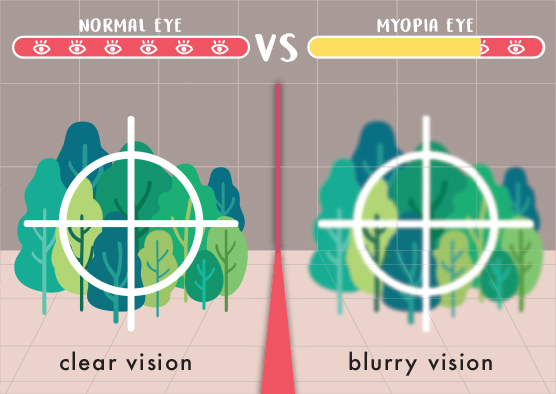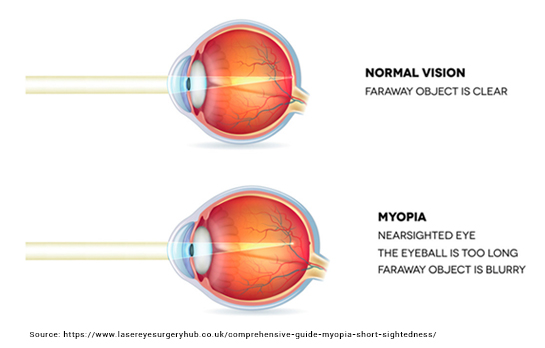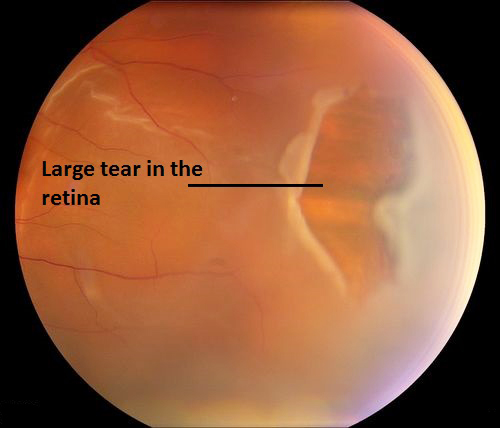Myopia & Kids - Is your child at risk?
Myopia, also known as short-sightedness, is a condition which affects the individual's ability to focus on a distant object while near vision remains clear.

It occurs when the eyeball is longer than the normal eye, or the lens and cornea system of the eye is too strong, resulting in light being focused in front of the retina instead, causing far objects to appear blurry.

(Top) A normal eye where light is focused on the retina compared to (bottom) myopic eye where light focuses in front of the retina due to eyeball elongation.
Risk Factor:
The exact causes of myopia remain unknown, but it is believed that a combination of both environmental and genetic factors can cause disruption to how the eye should develop.
1. Genetics:
If one parent is myopic, the risk of the child developing myopia is increased. The risk is even higher if both parents are short-sighted.
2. Environmental conditions
Lack of time spent outdoors may increase the chances of developing myopia. A child who does a lot of near work such as reading, using electronic gadgets or watching television at a close distance may increase the risk of developing myopia at a young age. Holding reading materials too close to the eye can also be associated with increased myopia.
Symptoms / Signs:
- Squinting when trying to focus on a distant object
- Moving closer to the desired object (like television)
- Holding devices or books close to the face
- Complain of headaches/eyestrain
- Unaware/unable to see distant objects
- Blinking excessively, trying to focus
- Frequent rubbing of eyes
- Having an abnormal head tilt while watching television/gadgets (could be an indication of myopia with astigmatism)
Side Effects:
1. Reduced quality of life
Myopia can reduce the quality of life in a child. The child might no longer be able to enjoy certain sports or activities which they used to enjoy before. In addition, a child might feel self-conscious when wearing glasses, particularly those wearing it for the first time. This might reduce the confidence of the child.
2. Affect academic performance
Without any visual aid, the child would not be able to see the whiteboard or screens clearly. He might not be able to focus on the lesson that the teacher is given. This affects the child’s learning in school and their future educational prospect.
3. Higher risk of other complications
Myopic children have a higher risk of developing a retinal tear or detachment especially high myopic individuals. In high myopia, the retinal tissues get stretched and thinned out due to eyeball elongation. The retina can become so thin that causes a break or tear in the retina, ultimately resulting in a retinal detachment and blindness if not treated early.

Source: www.meadowsretina.com/retinal-tear
4. Lifetime financial commitment
Correct of myopia can be in the form of optical correction such as prescriptive eyewear, contact lenses, specialty lenses or even surgical procedures (e.g. Lasik) to correct the vision. These financial costs may be a burden to the individuals.
Slowing down the progression of myopia
A child's myopia may progress rapidly if it goes undetected and is not properly managed at an early age. At present, there is no proven cure for myopia, but there are measures to prevent or slow down the progression of myopia.

Parents are encouraged to bring your child for regular eye-examination (once every 6 months to a year) to ensure that any vision problem is detected and managed early.
